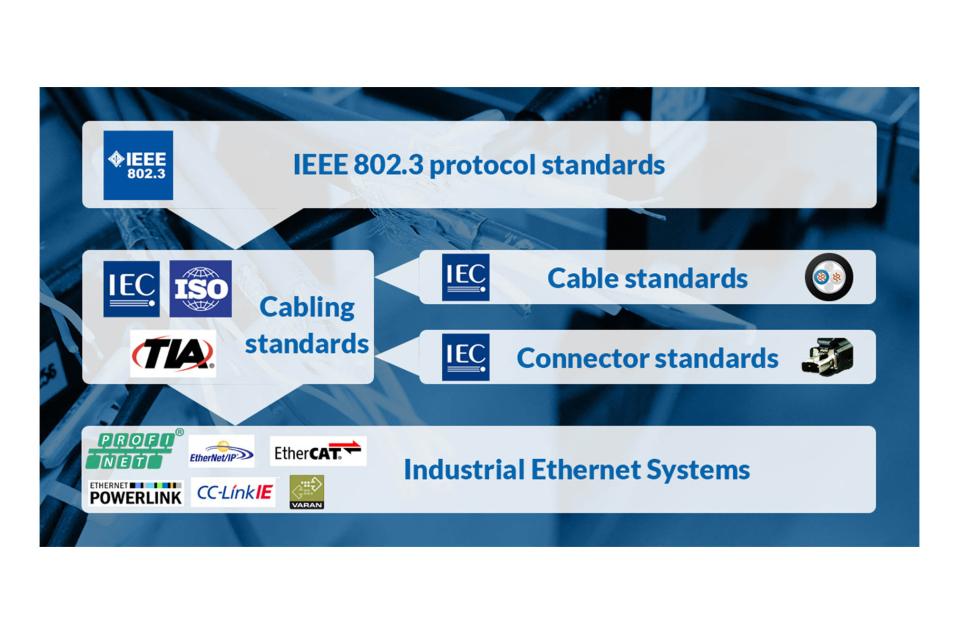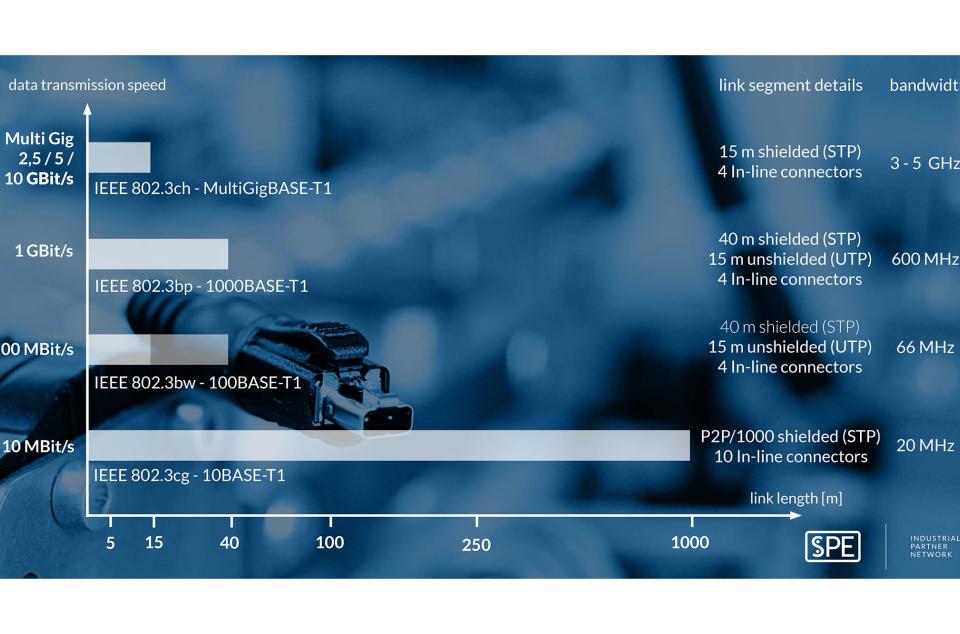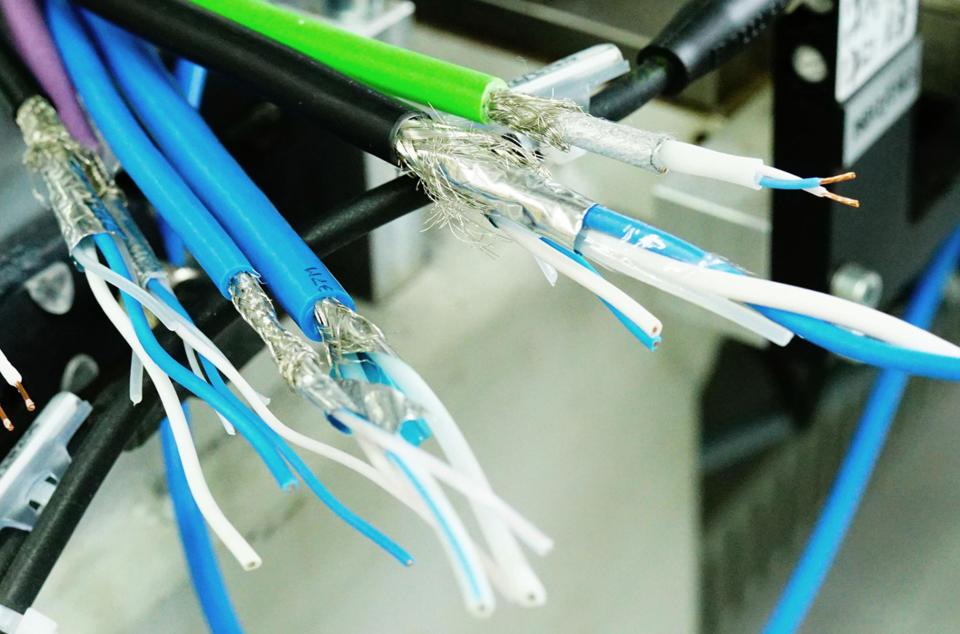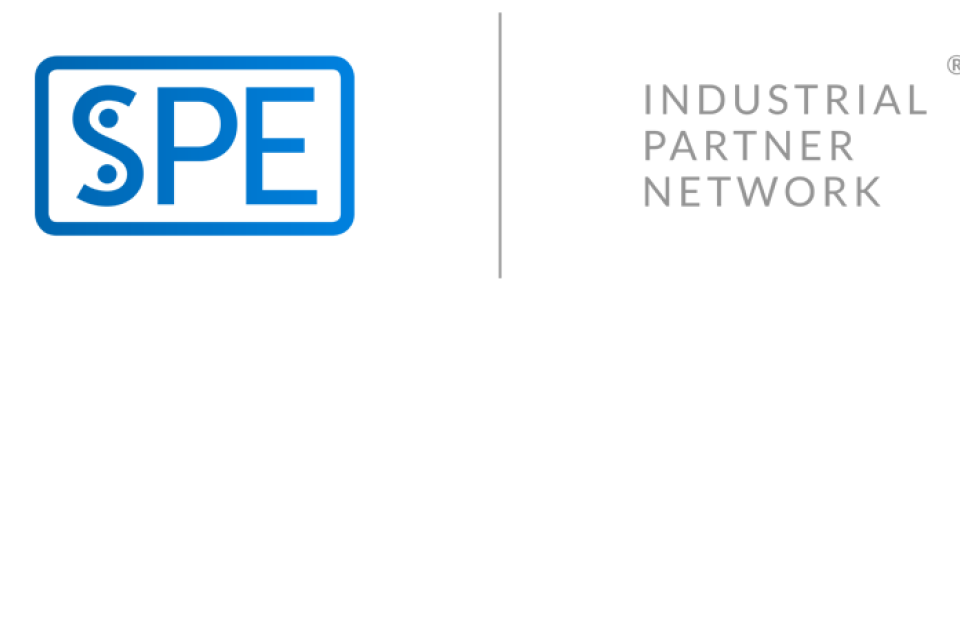Application Note
Single Pair Ethernet - Standardization landscape
With Single Pair Ethernet, a new physical layer is entering the world of Ethernet communication. Born out of the automotive industry, SPE is also developing into a key technology for the coming steps of digitization in industrial automation. Ethernet IP can finally be transmitted continuously from the cloud to the field level via just one pair of copper wires.
In industry, communication protocols and the infrastructure are subject to strict rules. To ensure interoperability and interchangeability, standardization is a high priority. This also applies to Single Pair Ethernet.
This article shows the work of international committees, the current status of standardization around the new physical layer SPE, and explains to users how and with which standards the path to the IIoT will be successfully taken.
SPE Standards base
For communication systems, internationally uniform standards are existentially important and necessary. Only in this way worldwide Ethernet networks can be planned, set up and operated. The following organisations and committees are relevant for the standardisation of SPE, and we are actively involved there:
• IEEE 802.3 – Transmission method, MDI, link segment
• IEC SC46C – Symmetrical copper cables (IEC 61156-x series)
• IEC SC 48B – Connectors (IEC 63171-x series)
• ISO/IEC JTC 1/SC 25/WG3 – Universal wiring (ISO/IEC 11801 series)
• IEC SC65C – Industrial networks, cabling (IEC 61918 und IEC 61784-5 series)
• ANSI/TIA TR-42 – Cabling systems (valid for North America)

INTERACTION OF STANDARDS ORGANIZATIONS:
The IEEE 802.3 specifies the primary transmission method and must also specify the transmission channel, such as the transmission length and number of connectors. The cabling committees ISO/IEC and TIA consider the transmission channel and access the corresponding IEC groups for connectors and cables. There is close cooperation between IEEE802.3 and ISO/IEC and TIA.

IEEE 802.3 Ethernet Protocols
This diagram shows the published SPE protocols with their associated possible transmission lengths and essential details.
For even higher speeds, especially in vehicles, the 25GBASE-T1 protocol for 25 Gbit/s up to at least 11 m channel length was published in June 2023. This SPE standard will primarily be used as a backbone in vehicles.
In addition to the "classic" point-to-point (P2P) SPE protocols described above, a type of BUS standard 10BASE-T1S is also available. The 10BASE-T1S standard is a point-to-multipoint (P2MP) or, as IEEE802.3 calls it, a MultiDrop transmission system and therefore functions like an Ethernet bus over a minimum 25 m long, unshielded cable with at least 8 devices. With the exception of 10BASE-T1S, all SPE protocols are compatible with Power over DataLine (PoDL) remote power supply technology. The IEEE802.3da working group has set itself the goal of increasing the number of bus participants to at least 16 nodes and the transmission length to at least 50 m and enabling remote power.
The origin
The IEEE 802.3cg was approved in November 2019 and there the “LC Style” according to IEC 63171-1 and the T1 Industrial according to IEC 63171-6 are listed as optional MDI ("...may be used..."). This formulation was chosen in order to be able to use other connectors, in particular special types for automotive applications or also PCB terminals, provided they meet the defined requirements. However, for cabling in buildings, data centers and industry, the LC style connectors selected in the ISO/IEC 11801 and TIA sets of standards according to IEC 63171-1 and the "T1 Industrial Style" according to IEC 63171-6 must be used.
In March 2021, the IEEE802.3de working group for the extension of point-to-point protocols was founded to add TSN functionalities for 10BASE-T1L. This working group "Time Synchronization for Point-to-Point Single Pair Ethernet Task Force" specified an extension of the MAC merge function and the Time Synchronization Service Interface (TSSI).
The 802.3dg working group will close the first gap in the transmission length with 100BASE-T1L, a new protocol for 100 Mbit/s over at least 500 m transmission length. As of January 2024, final results are expected by the end of 2024 and the location should be published in mid-2025. Information on the IEEE802.3 projects can be found here:

IEC 61156-x – STANDARDIZATION OF SPE CABLES
Within the IEC working group SC46C for the standardization of data cables by the meter, there are the following standards projects:
• IEC 61156-11 – SPE data cables up to 600 MHz bandwidth for fixed installation (edition 1 published and Edition 2 in work)
• IEC 61156-12 – SPE data cables up to 600 MHz bandwidth for flexible installation (edition 1 published and Edition 2 in work)
• IEC 61156-13 – SPE - Data cable up to 20 MHz bandwidth for permanent installation (CDV available)
• IEC 61156-14 – SPE - Data cable up to 20 MHz bandwidth for flexible installation (started)

IEC 63171 – STANDARDIZATION SPE CONNECTION TECHNOLOGY
The first SPE connector draft standard was submitted by HARTING to SC48B back in 2016. In 2017, CommScope submitted another SPE connector face for standardization and it was decided to create the common IEC 63171 series of standards for all SPE connectors. The following standards projects have already been published or are in progress:
CONNECTOR STANDARDS
• IEC 63171 – Basic standard with all specifications and test sequences (Edition 1 published and Edition 2 in work)
• IEC 63171-1 – CommScope SPE connector based on LC interlock for M1I1C1E1 applications (Edition 1 published in April 2020 and Edition 2 in work )
• IEC 63171-2 – SPE connectors from Reichle & De-Massari for M1I1C1E1 applications (Edition 1 published in Mai 2021)
• IEC 63171-3 – SPE connector from Siemon based on a pair of the well-known Tera connector for M1I1C1E1 applications (withdrawn)
• IEC 63171-4 – SPE connectors from BKS for M1I1C1E1 applications (Edition 1 published in September 2022)
• IEC 63171-5 – SPE connectors from Phoenix Contact based on IEC 63171-2 mating face for M2I2C2E2 and M3I3C3E3 applications (Edition 1 published in September 2022)
• IEC 63171-6 (previously IEC 61076-3-125) - SPE connectors from HARTING and TE Connectivity for M1I1C1E1, M2I2C2E2 and M3I3C3E3 applications (Published in January 2020 and Edition 2 published in March 2020)
• IEC 63171-7 (previously IEC 61076-3-125) - SPE connectors from HARTING and TE Connectivity for M1I1C1E1, M2I2C2E2 and M3I3C3E3 applications (Published in January 2020 and Edition 2 in progress)
The IEC 63171-6 for the T1 Industrial connector family is the world's first available standard for SPE connectors and covers all versions from IP20 to IP 65/67 including the T1 Industrial M8 Hybrid with 2 contacts each for SPE and Power.
sPE CABLING STANDARDS
SPE and the connectors standardised for it flow into the current cabling standards. Internationally, this primarily concerns the series of standards for structured cabling according to ISO/IEC 11801: 2017 (Edition 3) and, in a similar way, the European series of standards in CENELEC according to EN 50173. Here, SPE is first incorporated into Part 3 Industrial Cabling via annexes (Amendments). The central document for these annexes is ISO/IEC 11801 TR9906 “TECHNICAL REPORT: Balanced 1-pair cabling channels up to 600 MHz". The implementation of SPE in the ISO/IEC 11801 documents is important because only this standard describes the cabling channels with all the necessary parameters (length, number of connections, bandwidth and the complete set of transmission parameters including NEXT, FEXT, shielding characteristics, etc.) in relation to the environment - MICE - and can therefore also be metrologically verified after installation.
ISO/IEC 11801-3 AMD1 was published in April 2021. This new annex includes the SPE cabling channels:
• For industrial applications including the 10 Mbit/s 1000 m channel and the 1 Gbit/s 40 m channel in Annex E (normative) "Requirements for 1-pair cabling channels up to 600 MHz"
• and specifications for End-to-End Link (E2EL) up to 500 MHz / Cat.6A in Annex D (normative) "Requirements for End-to-End Link configurations".
In parallel, the installation standard IEC 61918 (IEC SC65C) for industry as a basis for the cabling of automation solutions was also adapted and supplemented by SPE. The new amendment to IEC 61918 addresses the new 1-pair cabling structures for Single Pair Ethernet (SPE) and the associated remote power supply PoDL (Power over Data Line). This closes the gap between classic IT infrastructure and industry, IoT/IIoT. SPE has a special significance for industry and the automation island. For the first time, it enables the universal application of TCP/IP-based automation protocols even for long distances, as in process automation or for the simple connection of sensors and actuators up to the industrial field level.
To what extent this will then also influence the automation profiles themselves remains to be seen. What is certain is that PI (with PROFINET according to IEC 61784-5-3) and ODVA (with EtherNet/IP™ according to IEC 61784-5-2) are actively involved in the further development and implementation of standards for SPE and are working on corresponding profile-specific standard documents. A similar approach will certainly be taken with Advance Physical Layer (APL), based on 10BASE-T1L, for the process industry and a new profile will also be developed for this in IEC 61784-5-x. In conjunction with the component standards for connectors and cables, all users of SPE receive clear guidelines for the construction and testing of corresponding transmission links. For 1 Gbit/s SPE, these cablings are initially limited to a range of 40 metres. For the 10 MBit/s variant, ranges of 1,000 m and beyond are realised.
Other papers on SPE cabling relevant to the USA including Canada and Mexico, such as ANSI/TIA-568.5, are being prepared at TIA TR 42.9. In the TIA 42.9 papers, this is realised via a revision: ANSI/TIA-568.7 (industrial cabling without SPE). In terms of content, all these additions are largely congruent.
These cabling standards provide the user with information on the structure of the cabling, the cabling components to be used to achieve the performance specifications and the limit values for checking the cabling. Thus, they are the most important instrument for the construction and commissioning of SPE cabling. At the same time, they ensure compatibility between devices and cabling via the references to the component standards (e.g. connectors according to IEC 63171-6). This compatibility is a basic prerequisite for the function of networks and connections based on SPE and thus the basis for IoT/IIoT. The use of other cabling components is possible in principle, but then no longer complies with the standard and carries the risk of incompatibilities and functional losses.

INTERNATIONAL COORDINATION FOR A UNIFORM STANDARD
For this reason, ISO/IEC JTC 1/SC 25/WG 3 and TIA 42 started international selection processes at the beginning of 2018 to define uniform interfaces. These two selection processes were co-initiated by IEEE 802.3, which requested a recommendation for an SPE MDI (= Media Depended Interface, the SPE device interface) from ISO/IEC and TIA.
More than 20 national IEC expert committees participated in this selection process. As a result of this selection, two mating faces prevailed:
• for building cabling (M1I1C1E1) the mating face according to IEC 63171-1: this mating face is based on the proposal of the company CommScope;
• for industry and industry-related applications (M2I2C2E2 and M3I3C3E3) the mating face according to IEC 63171-6: this mating face is based on the proposal of HARTING with the "T1 Industrial".
The selection process at TIA 42 has confirmed the results of ISO/IEC and thus there is clear global agreement on the SPE interfaces. These selected mating faces are now being incorporated into the respective international cabling standards. IEEE 802.3 has also specified these SPE interfaces in IEEE 802.3cg as the recommended Media Depended Interface (MDI).
This ensures the prerequisite for the large-scale use and thus for the successful marketing of SPE technology with the consistent compatibility of devices, cables and connectors in different fields of application and creates planning security for all market participants.
GLOSSARY
MICE describes environmental conditions for installations and provides planners and users with valuable information for specifying technical equipment and cabling. Requirements for mechanical robustness (M), IPxx degree (I), chemical and climatic resistance (C) and electromagnetic safety (E) are described. In the broadest sense, M1I1C1E1 describes an environment such as that found in an office building and M3I3C3E3 describes a fairly extreme environment such as that found in industry or outdoors.
OUTLOOK - INDUSTRIAL ETHERNNET USER GROUPS
In addition to the completion of the cabling standards at ISO/IEC and TIA, the focus of SPE standardization will now be on the integration of SPE into the Industrial Ethernet standardization groups such as PI (PROFINET International), ETG (EtherCAT), IDA (Modbus), CLPA (CC-Link IE), ODVA (EtherNet/IP™) and other user groups.
However, depending on the strategic orientation and skill of these user groups, the implementation of SPE in the individual automation profiles will probably be more from the device side (sensor/actuator networks) and will not automatically affect communication in the automation network above. Fast Ethernet (e.g. PROFINET) and Gigabit Ethernet (e.g. EtherNet/IP™) will still predominate here for the time being.
For PROFINET, hybrid interfaces for field cabling have been added to the current guideline for cabling and connection technology. In the new version, the T1 Industial M8 Hybrid according to IEC 63171-6 and the M12 Hybrid Type II and Type VI according to IEC 63171-7 have been newly defined as PROFINET interfaces for SPE and power supply. The ODVA is also discussing SPE as a new physical layer and is working on the corresponding documents.
summary
The T1 Industrial according to IEC 63171-6 is set in IEEE 802.3 as MDI as well as in the cabling standards at ISO/IEC and TIA. This comprehensive standardisation and referencing makes the T1 Industrial connector family the only consistently standardised SPE interface worldwide and the best choice for all industrial applications.

ABOUT THESPE INDUSTRIAL PARTNER NETWORK
The potential of SPE is clear, but the broad rollout of SPE requires work and expertise from a wide range of stakeholders. The SPE Industrial Partner Network was founded by companies with focus in all areas of the SPE ecosystem and advocacy of Single Pair Ethernet. The network works together to ensure that SPE technology is pushed further and faster.
The network provides a reliable platform for all necessary technical experts to cooperate and work together easily over the borders of single companies. Partnerships within the network allow for increases in product and performance variations as well as smoother standardization processes. The founding members of the SPE Industrial Partner Network include HARTING, TE Connectivity, HIROSE, Würth Elektronik, LEONI, Murrelektronik, and Softing IT Networks. Currently, the network has grown up to more than 45 member companies and is increasing weekly.

